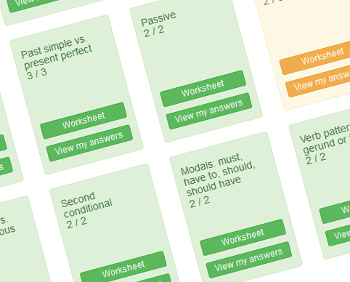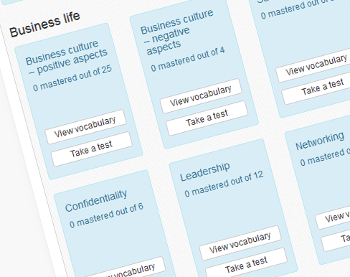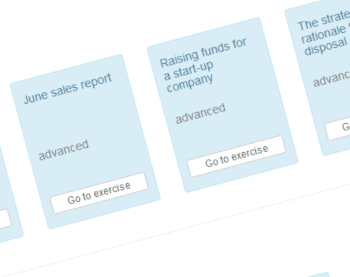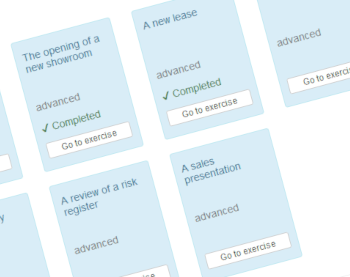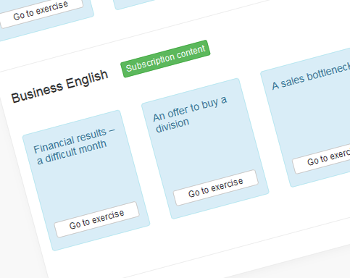Discorso indiretto
(Indirect speech)
Introduzione
Usiamo il discorso indiretto per riportare ciò che qualcun altro ha detto:- Clara: "I’m tired." (discorso diretto)
- Sonia: Clara said that she was tired. (discorso indiretto)
- Peter: She said "I’m hungry".
o puoi usare il discorso indiretto:
- Peter: She said that she was hungry.
Form
Quando si usa il discorso indiretto, il verbo introduttivo principale della frase di solito è al passato:- He said ...
- She told me ...
- They asked ...
| direct speech | indirect speech | |
|---|---|---|
| "I'm going to the park." | ➞ | She said that she was going to the park. |
| "You must report to the manager." | ➞ | He told me that I had to report to the manager. |
| "We will do it." | ➞ | They said that they would do it. |
| "Ana can swim very well." | ➞ | I said that Ana could swim very well. |
Il past simple nel discorso diretto può rimanere past simple per il discorso indiretto o essere cambiato in past perfect:
| discorso diretto | discorso indiretto | |
|---|---|---|
| "I arrived late, so they sacked me." | ➞ |
He said that he arrived late, so they sacked him.
He said that he had arrived late, so they had sacked him. |
Quando usi il discorso indiretto, puoi omettere la parola "that":
- I said that she should have seen a doctor.
- I said she should have seen a doctor.
Esercizio 1
Completa il discorso indiretto cambiando il tempo del verbo del discorso diretto:
.Quando usi il discorso indiretto, devi ricordarti di cambiare i pronomi soggetto in pronomi oggetto:
| discorso diretto | discorso indiretto | |
|---|---|---|
| "I'm late for work." | ➞ | April said that she was late for work. |
| "I will give you the box." | ➞ | Tom said that he would give me the box. |
Dobbiamo cambiare anche gli avverbi e le locuzioni avverbiali di tempo e luogo:
| discorso diretto | discorso indiretto | |
|---|---|---|
| "We will arrive tomorrow." | ➞ | They said they would arrive the next day. |
| "The diary is here in my office." | ➞ | He told me that the diary was there in his office. |
Esercizio 2
Completa il discorso indiretto con i pronomi corretti:
.Se la situazione riportata è ancora vera al momento della narrazione, non è necessario cambiare il tempo verbale per il discorso indiretto:
| discorso diretto | discorso indiretto | |
|---|---|---|
| "I love my new house!" | ➞ |
Mary said that she loves her new house.
(Questo è ancora vero. Ama ancora la sua casa.) |
Ma è corretto anche cambiare il tempo verbale:
| discorso diretto | discorso indiretto | |
|---|---|---|
| "I love my new house!" | ➞ | Mary said that she loved her new house. |
Nelle situazioni seguenti, devi cambiare il tempo verbale:
- La situazione riportata è cambiata o è finita;
Rose said that she was going to New York.
(Non "is going" perchè ora è lì.)
- Ciò che è stato detto e ciò che è vero sono diversi;
She told me she would tell him.
(Non "will tell" perchè o lei non gliel'ha detto o non sappiamo se lei gliel'ha detto.)
Quando riportiamo ordini, comandi o richieste usiamo "tell" o "ask" e l'infinito con "to":
| discorso diretto | discorso indiretto | |
|---|---|---|
| "Close the door." | ➞ | She told me to close the door. |
| "Please, give me the key." | ➞ | He asked me to give him the key. |
Say or tell?
"Tell" ha bisogno di un oggetto:
- Paul told me he was retiring.
- I told him to be quiet.
- We told the teacher that he was wrong.
- Mary said that she was leaving.
- I said she was very noisy.
- They said that the house was very old.
Ulteriore pratica
.Create a free Getting Started account
Altri link utili
I seguenti esercizi prevedono l'uso della seguente struttura grammaticale:
Potresti essere interessato anche a:
- Business English vocabulary exercises
- Lettura Account Pro
- Scenario-based dictation exercises – business English Account Pro
Potresti essere interessato anche a:
Principiante
- Passato semplice
- Passato remoto progressivo
- Indicativo presente
- Presente progressivo (presente)
- Passato prossimo
- 'Going to' e 'will'
- Presente progressivo (futuro)
- Imperativi
- 'To be'
- Pronomi: soggetto, oggetto
- Pronomi: relativi
- Aggettivi e pronomi: possessivi
- Aggettivi e pronomi: dimostrativi
- Ordine di base degli aggettivi
- Domande WH (pronomi interrogativi)
- Articoli: a, an, the
- Preposizioni: tempo e spazio
- 'There is' / 'there are' e quantificatori
- Congiunzioni 'and', 'or', 'but'
- Comparativi / superlativi (than)
- Zero conditional (se)
- First conditional (se)
- Modali: 'can' / 'can't', 'could', 'will', 'shall'
- Modelli verbali
- Sequence adverbs
Intermedio
- Trapassato remoto
- Passato remoto vs. passato prossimo
- Passato remoto vs. passato remoto progressivo
- Passato prossimo progressivo
- Futuro
- Futuro progressivo
- Passivo
- Discorso indiretto
- 'Used to' / 'would'
- Second conditional
- Third conditional
- Proposizioni relative
- Pronomi riflessivi
- Modali: 'must', 'have to', 'should', 'should have'
- Modelli verbali: gerundio o infinito
- Avverbi di grado
- Ordine degli aggettivi
- Aggettivi: '-ed' o '-ing'
Grammatica
Individua in modo rapido e concentrati su problemi grammaticali:
- Fogli degli esercizi di grammatica e test
- Scenario-based grammar exercises
- Grammar additional practice questions
- Verb conjugation practice
- Pratica sui condizionali
Migliora la grammatica
Vocabolario
Vocabulary exercises:Espandi il tuo vocabolario coi nostri tre trainer di vocabolario:Fai pratica di spelling usando i nostri tre test di spelling:Fai pratica con il vocabolario relativo a grafici e tabelle:
Impara il lessico
Lezioni video
Concentrati su aree di Business English specifiche con le nostre lezioni video:
Segui una lezione video
